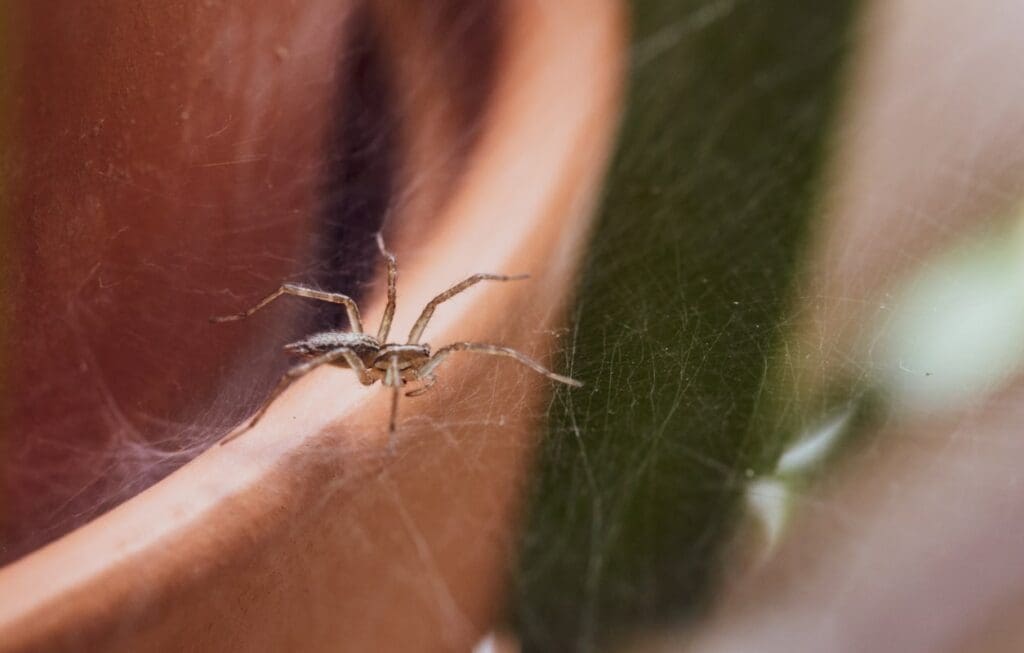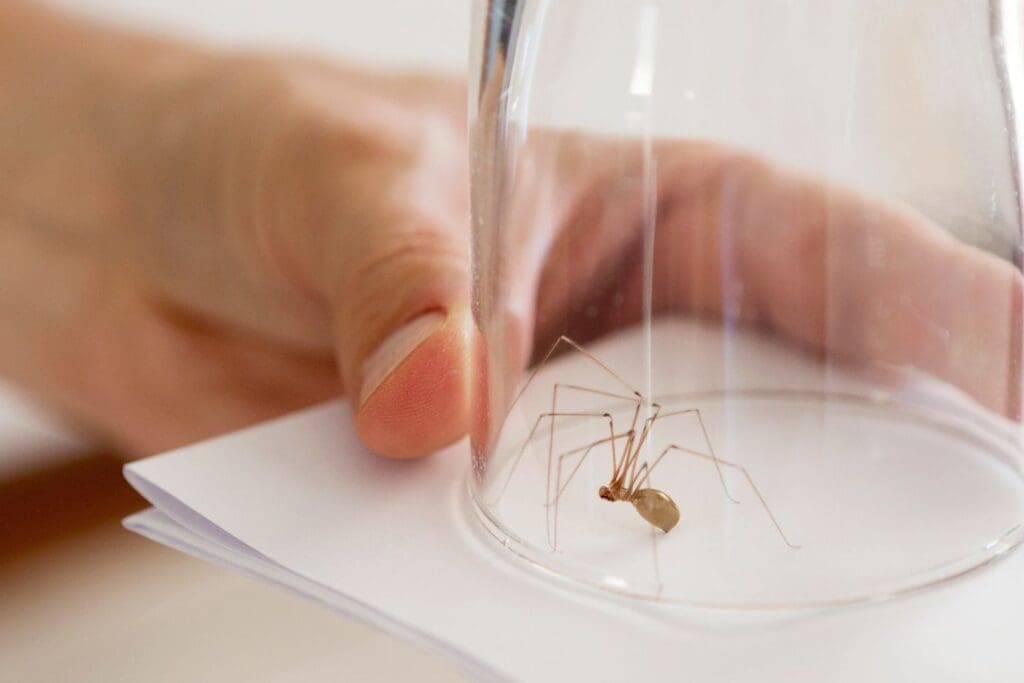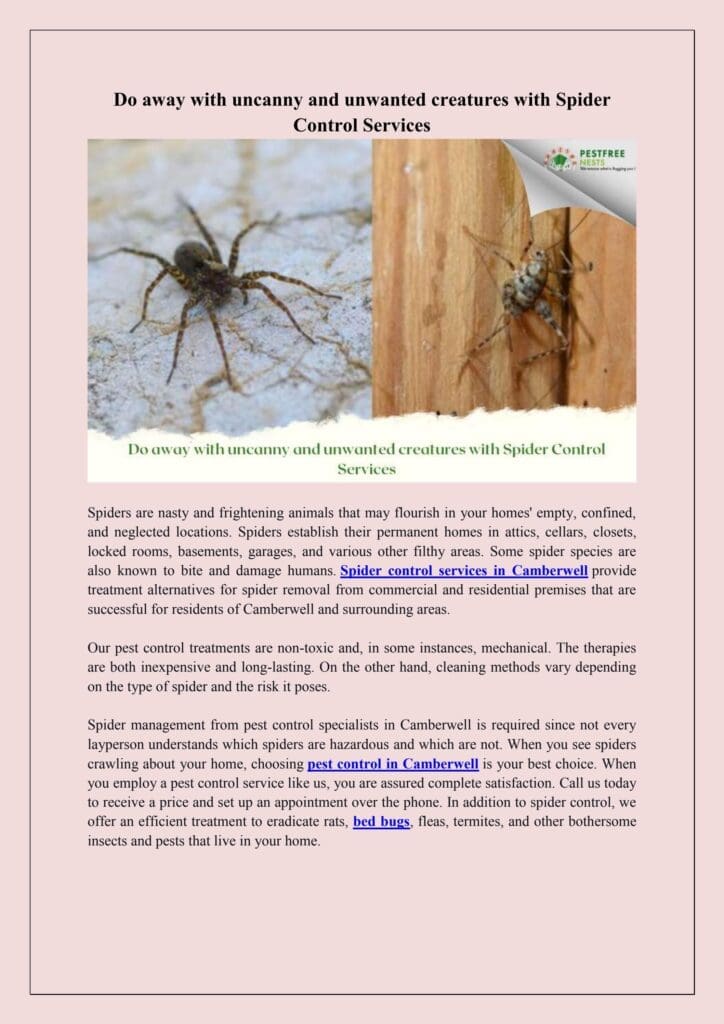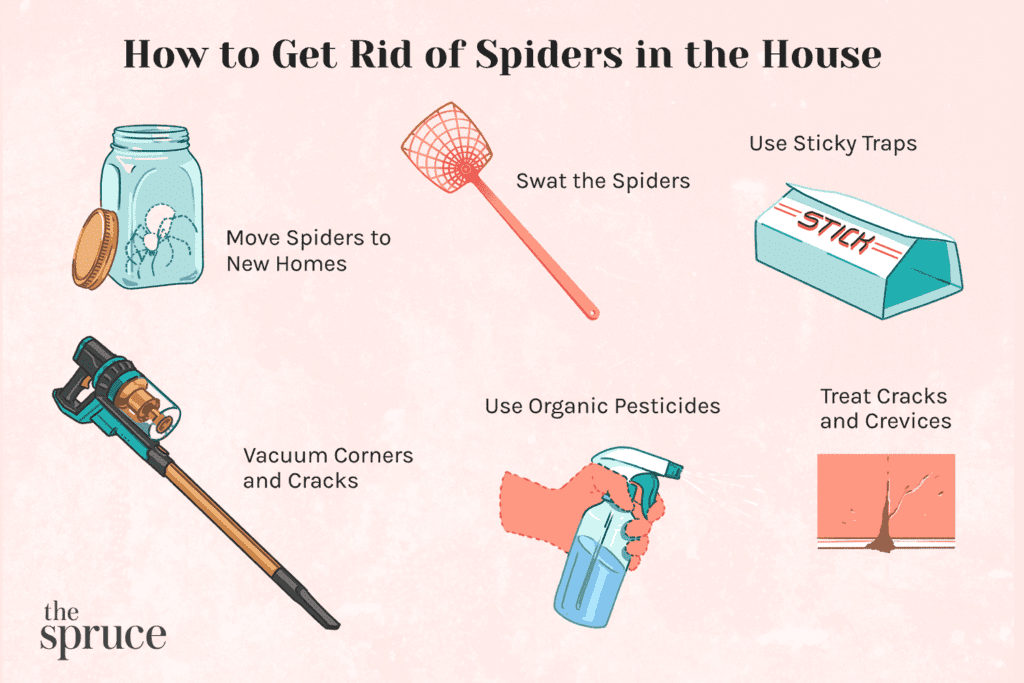Are you tired of those eight-legged creatures invading your space? Well, look no further! In this article, we are going to provide you with all the information you need to effectively tackle spider infestations. From the costs of professional pest control to DIY methods and prevention tips, we’ve got you covered. Say goodbye to those creepy crawlies and reclaim your home with our comprehensive guide on pest control for spiders.

1. Costs of Spider Pest Control
Spider infestations can be a nuisance, and it’s important to address them promptly to avoid potential health risks and damage to your property. When it comes to spider pest control, there are two main options to consider: professional services or a do-it-yourself (DIY) approach. Both options come with their own costs, and it’s essential to weigh the pros and cons before making a decision.
1.1 Professional Spider Pest Control Services
Hiring professional spider pest control services can provide you with the expertise and equipment needed to effectively eliminate spiders from your home or business premises. The cost of such services can vary depending on several factors, including the size of the infestation, the location, and the specific methods used by the company.
On average, you can expect to pay anywhere from $100 to $300 for a professional spider pest control treatment. This cost may increase if multiple visits are required or if additional measures like web removal or exclusion techniques are necessary. While professional services can be more expensive compared to a DIY approach, they often offer long-lasting results and peace of mind.
1.2 DIY Spider Pest Control
If you’re looking for a more budget-friendly option, DIY spider pest control can be a viable solution. Various products and methods are available for homeowners to tackle spider infestations themselves. The cost of DIY spider pest control largely depends on the products and tools you choose to use.
You can find spider control products such as sprays, traps, and repellents at your local hardware store or online. These products typically range in price from $10 to $50, depending on the brand and quantity. Additionally, you may need to invest in protective gear like gloves and masks to ensure your safety during the process.
1.3 Cost Comparison: Professional vs. DIY
When comparing the costs of professional spider pest control services and DIY methods, it’s essential to consider the effectiveness and longevity of the results. While professional services may come with a higher upfront cost, they often provide more thorough and long-term solutions.
DIY methods, on the other hand, may offer a more budget-friendly option, but they may require more time and effort on your part. Additionally, the efficacy of DIY products can vary, and you may need to reapply treatments more frequently to maintain control over spiders.
Ultimately, the choice between professional services and DIY methods depends on your specific needs, budget, and comfort level with handling pest control tasks. If you have a large infestation or prefer a hands-off approach, professional services may be the way to go. However, if you have a small infestation or enjoy tackling home improvement projects, the DIY route can be a more cost-effective option.
2. Methods for Spider Pest Control
When it comes to spider pest control, there are three main categories of methods: chemical control, physical control, and natural control. Each method has its own advantages and considerations, and you can choose the one that aligns with your preferences and the severity of the infestation.
2.1 Chemical Control
Chemical control involves the use of insecticides to kill or repel spiders. This method is commonly used by both professionals and homeowners to effectively eliminate spider populations. It’s important to note that when working with insecticides, proper safety precautions should be followed.
2.1.1 Insecticides for Spider Control
Insecticides specifically labeled for spider control can be found in the market. These products often contain active ingredients such as pyrethroids, which are effective against spiders. Before using any insecticide, carefully read and follow the instructions provided by the manufacturer.
2.1.2 Applying Insecticides
When applying insecticides, it’s important to target areas where spiders are likely to hide or build their webs. This includes corners, cracks and crevices, and other dark and undisturbed areas. Carefully spray the insecticide according to the instructions, ensuring adequate coverage of the affected areas.
2.2 Physical Control
Physical control methods aim to physically remove spiders and their webs from your home or property. These methods are generally safe and do not rely on chemical treatments.
2.2.1 Vacuuming and Dusting
One of the most effective physical control methods is vacuuming. By using a vacuum cleaner with a hose attachment, you can easily remove spiders, their webs, and their eggs from various surfaces. Be sure to empty the vacuum bag or canister promptly to prevent spiders from escaping.
Dusting is another physical control method that can be used to eliminate spiders. Applying a light dusting of insecticidal dust, such as diatomaceous earth, to areas where spiders are present can help eliminate them. The fine particles in the dust adhere to the spider’s body, eventually leading to its death.
2.2.2 Web Removal
Regularly removing spider webs from your home or property can discourage spiders from settling in. Use a broom or a long-handled duster to carefully remove the webs without disturbing the spider. Dispose of the webs in a sealed bag to prevent reinfestation.
2.3 Natural Control
For those who prefer a chemical-free approach, natural control methods can be effective in managing spider populations. These methods rely on natural repellents or deterrents to keep spiders at bay.
2.3.1 Essential Oils
Certain essential oils, such as peppermint, lavender, and tea tree oil, are known to repel spiders. Mixing a few drops of these oils with water and spraying the solution in spider-prone areas can create an unfavorable environment for spiders. However, it’s important to note that essential oils may need to be reapplied regularly for optimal effectiveness.
2.3.2 Spider Repellent Plants
Another natural control method is to incorporate spider repellent plants into your landscaping or indoor spaces. Plants like eucalyptus, mint, and lemon balm naturally emit scents that spiders find unappealing. By strategically placing these plants around your property, you can deter spiders from establishing their webs and colonies.

3. Prevention Tips to Keep Spiders Away
Preventive measures play a crucial role in reducing the likelihood of spider infestations. By following these tips, you can create an environment that is less attractive to spiders.
3.1 Eliminate Spider Habitats
To prevent spiders from taking up residence in your home or property, it’s important to eliminate their potential habitats. Keep vegetation trimmed away from the exterior of your home to reduce harborage areas. Regularly clean up debris, such as piles of leaves or wood, which can provide hiding spots for spiders.
3.2 Reduce Indoor Clutter
Clutter provides spiders with hiding places and makes it more difficult to detect and control infestations. Keep your indoor spaces organized and free of unnecessary clutter. Regularly declutter storage areas like basements, attics, and garages to eliminate potential spider hiding spots.
3.3 Seal Entry Points
Spiders can enter your home through tiny cracks and gaps. Inspect the exterior of your home for any openings and seal them with caulk or weatherstripping. Pay special attention to areas around windows, doors, vents, and utility penetrations. By sealing these entry points, you can significantly reduce the chances of spiders finding their way inside.
3.4 Outdoor Maintenance
Regular outdoor maintenance can help deter spiders from your property. Keep grass and shrubs trimmed to make your yard less attractive to spiders and their prey. Remove any webs you come across during routine inspections. Additionally, consider using yellow outdoor lights instead of white lights, as spiders are less attracted to yellow light.
3.5 Lighting and Window Treatments
Spiders are often attracted to sources of light, as these can attract their prey. To minimize the likelihood of spiders gathering near windows and doors, consider using blinds, shades, or curtains to block out light during nighttime hours. This can also help create a more comfortable and private indoor environment.
3.6 Store Firewood Properly
Spiders are known to hide in firewood piles, making it important to store firewood properly. Keep firewood at least 20 feet away from your home and store it off the ground. Regularly inspect the wood for any signs of spiders or other pests before bringing it inside.
3.7 Limit Attractive Prey
Spiders hunt insects as their primary food source, so reducing the number of insects around your property can make it less appealing to spiders. Take steps to limit attractive prey by minimizing outdoor lighting, fixing any plumbing or moisture issues that can attract insects, and keeping doors and windows properly sealed.
3.8 Regular Cleaning and Vacuuming
Regular cleaning and vacuuming can help discourage spiders from settling in your home. Pay attention to corners, cracks, and other nooks and crannies where spiders are likely to hide. By keeping your living spaces clean and free of dust, debris, and cobwebs, you can minimize the chances of a spider infestation.
4. Product Reviews for Spider Pest Control
There are various products available on the market that can assist in spider pest control. Here are some commonly used products that have received positive reviews from users:
4.1 Spider Traps and Catchers
Spider traps and catchers are an effective way to capture spiders without the need for chemicals. These devices typically use sticky glue boards or suction mechanisms to trap spiders. They are non-toxic and easy to use, making them a popular choice for those seeking a humane approach to spider control.
4.2 Insecticides for Spider Control
Several insecticides are specifically designed for spider control and can be highly effective in eliminating infestations. Always follow the instructions provided by the manufacturer when using insecticides. Some commonly used insecticides for spider control include sprays, dusts, and aerosols.
4.3 Spider Repellents
Spider repellents are designed to create an environment spiders find undesirable, discouraging them from establishing their webs and colonies. These repellents often contain natural ingredients like essential oils or plant extracts. Spray repellents can be applied to spider-prone areas both indoors and outdoors.
4.4 Essential Oil Sprays
Essential oils, such as peppermint, lavender, and citrus oils, have been reported to repel spiders. Many brands offer pre-mixed essential oil sprays specifically formulated for spider control. These sprays can be applied directly to areas where spiders are commonly found.
4.5 Web Sweepers and Dusters
Web sweepers and dusters are specialized tools that make the removal of spider webs easier. They typically feature long handles and soft bristles or brushes to safely and effectively remove spider webs without causing damage to surfaces. These tools can be used both indoors and outdoors.
4.6 Window Screens and Door Sweeps
Preventing spiders from entering your home in the first place is key to effective pest control. Window screens and door sweeps are valuable products that act as physical barriers, keeping spiders and other pests outside. Regularly inspect and maintain your window screens and door sweeps to ensure they are in good condition.

5. Safe Handling and Environmental Considerations
When dealing with spider pest control, it’s important to prioritize safety and consider the potential environmental impacts of the methods and products used.
5.1 Safety Precautions with Insecticides
Insecticides can be harmful if not handled properly. Always read and follow the instructions provided by the manufacturer before using any insecticide. Wear appropriate protective gear, such as gloves and masks, during application to minimize exposure. Keep children and pets away from treated areas until the product has dried.
5.2 Environmental Impact of Pest Control
Some pest control methods and products can have unintended environmental consequences. Synthetic insecticides, in particular, may have adverse effects on beneficial insects, wildlife, and water sources. Whenever possible, opt for more eco-friendly alternatives and use chemicals sparingly and only as directed.
5.3 Eco-Friendly Pest Control Alternatives
For those concerned about the environmental impact of pest control, there are several eco-friendly alternatives available. Natural control methods, such as physical removal and the use of essential oils, are generally considered to be safer for the environment. Additionally, many companies now offer eco-friendly pest control products that are formulated with non-toxic ingredients.
6. Common Myths about Spider Pest Control
There are several common myths and misconceptions surrounding spider pest control. Let’s debunk some of these myths to ensure you have accurate information.
6.1 Ultrasonic Spider Repellers
Ultrasonic spider repellers claim to emit high-frequency sound waves that repel spiders. However, scientific research has shown that these devices are largely ineffective in controlling spiders. Spider behavior is driven primarily by touch and vibration, not sound waves.
6.2 Chestnuts as Spider Repellents
There is a common belief that chestnuts can repel spiders. However, there is no scientific evidence to support this claim. While some people may have reported success with chestnuts, it is likely due to a placebo effect rather than any inherent repellent properties.
6.3 Vinegar as a Spider Control Method
Vinegar is often suggested as a natural spider control method. While vinegar can act as a natural deterrent due to its strong odor, it is not a reliable or long-term solution for spider infestations. Spiders may eventually get accustomed to the smell or find other areas to inhabit.

7. Professional Spider Pest Control Companies
If you decide to enlist the help of a professional spider pest control company, it’s important to choose a reputable and experienced service provider. Here are three companies known for their expertise in spider pest control:
7.1 Company A
Company A specializes in residential and commercial pest control services. They have a team of trained technicians who are knowledgeable about spider behavior and effective control techniques. Company A offers customized treatment plans tailored to your specific needs.
7.2 Company B
Company B has been providing pest control services for over 20 years. They have a strong reputation for their comprehensive approach to spider pest control. Their technicians are trained to identify and target the root causes of spider infestations, ensuring long-lasting results.
7.3 Company C
Company C offers a wide range of pest control services, including spider control. They have a team of certified technicians who use advanced techniques and environmentally friendly products to tackle spider infestations. Company C places a strong emphasis on customer satisfaction and offers ongoing support and maintenance plans.
8. Identifying Common Spider Species
Understanding the different species of spiders can be helpful in determining the level of risk associated with infestations. Here are some common spiders you may come across:
8.1 Black Widows
Black widows are venomous spiders identified by their shiny black bodies and red hourglass markings. They are typically found in dark, undisturbed areas such as garages, sheds, or woodpiles. Black widow bites can be serious and require immediate medical attention.
8.2 Brown Recluses
Brown recluses are another venomous spider species known for their violin-shaped markings on the back of their cephalothorax. They prefer warm, dry environments and are commonly found in basements, closets, or secluded areas. Brown recluse bites can cause necrotic tissue damage and should be treated by a medical professional.
8.3 House Spiders
House spiders refer to a variety of spider species that commonly inhabit human dwellings. They are generally harmless and are known for their cobweb-building behavior. House spiders help control other household pests but can become a nuisance if their populations grow too large.
8.4 Wolf Spiders
Wolf spiders are large and robust spiders known for their hunting behavior. They do not build webs but actively chase down their prey. Wolf spiders are typically found outdoors, hiding in the vegetation or burrows. While they are venomous, they are not considered a significant threat to humans.
8.5 Jumping Spiders
Jumping spiders are small, colorful spiders known for their agility and ability to make impressive leaps. They do not build webs but actively hunt their prey. Jumping spiders are commonly found both indoors and outdoors. They are harmless to humans and often considered beneficial due to their diet of insects.

9. Health Risks Associated with Spiders
While most spiders are harmless and provide a beneficial role in ecosystems, certain species can pose health risks. It’s important to be aware of the potential dangers associated with spider infestations.
9.1 Venomous Spider Bites
Venomous spider bites can cause various health issues, ranging from mild discomfort to severe reactions. Common symptoms of venomous spider bites may include pain, inflammation, redness, and itching. However, it’s important to note that most spider bites are harmless and do not require medical attention.
9.1.1 Symptoms and Treatment
If you are bitten by a venomous spider, it’s crucial to seek medical attention immediately. The symptoms and severity of spider bites can vary depending on the species and individual reactions. Doctors can provide the appropriate treatment, including pain management and the administration of antivenom if necessary.
9.2 Allergies to Spider Bites
Some individuals may develop an allergic reaction to spider bites, even if the spider is not venomous. This allergic reaction can manifest as a rash, hives, swelling, or difficulty breathing. If you suspect an allergic reaction, seek medical help promptly.
9.3 Psychological Impact
For some individuals, the presence of spiders can cause significant psychological distress. Arachnophobia, or the fear of spiders, is a common phobia that can result in anxiety, panic attacks, and a reduced quality of life. If spider infestations are causing significant psychological distress, consider seeking support from a mental health professional.
10. Frequently Asked Questions about Spider Pest Control
Here are some frequently asked questions about spider pest control, along with their answers:
10.1 How long does it take to get rid of spiders?
The timeline for getting rid of spiders depends on various factors, such as the severity of the infestation and the effectiveness of the control methods used. In some cases, spider populations can be significantly reduced within a few weeks. However, ongoing prevention and maintenance are recommended to ensure long-term control.
10.2 Are spider repellents effective?
Spider repellents can be effective in deterring spiders from specific areas. However, their effectiveness may vary depending on factors such as the specific product, concentration, and application frequency. Regular reapplication may be necessary to maintain their effectiveness.
10.3 How can I prevent spiders from coming back?
To prevent spiders from returning, it’s important to implement preventive measures such as eliminating habitats, reducing clutter, sealing entry points, and maintaining a clean environment. Regular inspections and maintenance can help identify and address any potential issues before they become major infestations.
10.4 Can spiders climb walls and ceilings?
Yes, spiders are adept climbers and can crawl up walls and across ceilings. Their ability to scale vertical surfaces is due to the small, specialized hairs on their legs that allow them to grip onto various surfaces.
10.5 What are natural ways to repel spiders?
Natural ways to repel spiders include using essential oils such as peppermint, lavender, or tea tree oil, as spiders dislike the scent. Additionally, incorporating spider-repellent plants like eucalyptus, mint, or lemon balm into your surroundings can help deter spiders from establishing webs or colonies.
10.6 Do spiders leave on their own?
Spiders are relatively resilient creatures and can survive for extended periods of time. If a spider infestation is left untreated, the population may continue to grow. Taking proactive measures to control and prevent spider infestations is recommended for long-term success in managing these pests.
By understanding the costs, methods, prevention tips, and other important factors related to spider pest control, you can make informed decisions and effectively manage spider infestations. Remember to prioritize safety, consider the environmental impact, and consult professionals when necessary. With diligence and the right approach, you can keep your home or business spider-free and enjoy a pest-free environment.

I am Randy, the author behind PestControld.com. Drawing from decades of experience, I aim to provide valuable insights, expert advice, and practical recommendations to help you make informed decisions when assessing viable pest control solutions.